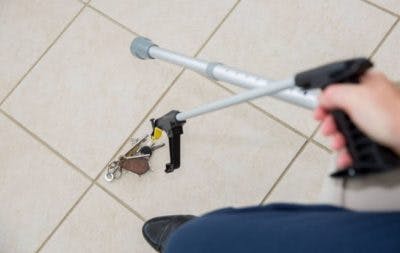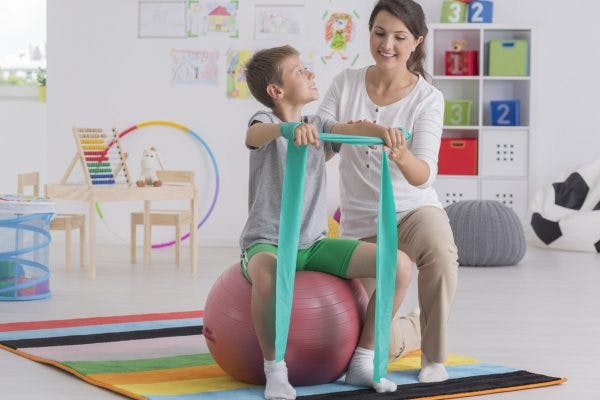Did you know that there’s a link between cerebral palsy and fatigue? Fatigue can be debilitating and drastically affect your ability to carry out daily tasks, excel at work, or socialize. Fortunately, there are ways to manage fatigue and improve your quality of life.
This article will explain why people with cerebral palsy experience fatigue and the most effective ways to stabilize energy levels in order to accomplish daily tasks and enjoy leisure activities. Use the links below to jump straight to a specific section.
What is Fatigue?
Many people think of fatigue as simply feeling tired. The Diagnostic and Statistical Manual of Mental Disorders 5th Edition (DSM-5) defines fatigue as “a state usually associated with a weakening or depletion of one’s physical and/or mental resources, ranging from a general state of lethargy to a specific, work-induced burning sensation within one’s muscles”. Fatigue is more significant than just feeling tired, and may be experienced very differently depending on the individual and the situation.
Physical fatigue is generally what people first think of when talking about fatigue. It occurs when the muscles of the body are worn out. Like each type of fatigue, physical fatigue can be a temporary or long-lasting, chronic condition. Physical fatigue interferes with the ability to continue performing daily activities at your normal functional level.
Mental fatigue, while not as easily visible from the outside, can be equally as debilitating as physical fatigue. There are different types of mental fatigue, including cognitive, social and emotional fatigue.
- Cognitive fatigue refers to difficulties processing, applying, and concentrating on information due to overwhelming cognitive demands.
- Social fatigue results from having too many, too few, or more challenging social interactions.
- Emotional fatigue, which is also called emotional exhaustion, is often caused by excessive stress from one’s daily duties.
Because of the motor impairments and associated conditions experienced by people with cerebral palsy, individuals may experience one or more types of fatigue.
Is Cerebral Palsy Linked to Increased Fatigue?
Cerebral palsy is caused by damage to areas of the brain associated with movement. This damage results in difficulties with regulating muscle tone and maintaining proper posture, among other motor impairments. Generally, individuals with cerebral palsy have higher levels of fatigue, especially physically, because they have to exert more energy to perform tasks.
For example, individuals with cerebral palsy who are able to walk (ambulatory) require 2-3 times more energy to walk than typically developing peers. Individuals with dyskinetic cerebral palsy and dystonia also tend to have higher energy expenditures. This is because those with dyskinetic cerebral palsy often experience uncontrollable movements and appear to constantly be moving due to fluctuations in muscle tone. Continuous movement is continuous energy exertion, resulting in physical fatigue.
Causes of Fatigue in Individuals with Cerebral Palsy

Aside from motor impairments, there are additional factors that can contribute to both physical and mental fatigue in individuals with cerebral palsy.
Additional causes of cerebral palsy-related fatigue include:
- Breathing difficulties. Individuals with cerebral palsy may develop respiratory complications,
makingcausing them to physically fatigue more quickly. - Psychological duress. Due to challenges fitting in with peers, some people with cerebral palsy may frequently experience emotional fatigue.
- Speech impairments. People with cerebral palsy who have oral motor impairments often become frustrated due to communication difficulties. These difficulties may contribute to emotional and social fatigue.
- Sleep deprivation. Many conditions associated with cerebral palsy such as pain, epilepsy, GERD, and breathing problems may disrupt sleep. Sleep is essential for recharging both physical and mental energy levels and preventing fatigue.
- Malnutrition from feeding difficulties. Oral motor impairments can make it difficult for children with cerebral palsy to chew and swallow. As a result, many children with CP tend to not eat enough and therefore experience low energy levels.
- Muscle weakness due to limited physical activity. People with cerebral palsy who are unable to walk often don’t get enough physical activity. Therefore, their muscles tend to atrophy from disuse and the simplest movements can become challenging.
- Medications. Fatigue is a common side effect of most medications.
- Chronic pain. Pain may cause sleeping difficulties, frustration, and decreased physical activity, resulting in physical and/or emotional fatigue.
There may be additional causes outside those listed here that contribute to fatigue in individuals with cerebral palsy. However, despite all of these potential causes, there are many ways that individuals with cerebral palsy can address and manage their fatigue.
Managing Fatigue with Cerebral Palsy
Fatigue can be mentally and physically draining, but it can also be managed. Because so many factors can lead to fatigue, effective management will vary case-by-case and require personalized treatment.
Below are some effective ways to manage fatigue.
Prioritizing and Planning
One of the best practices for minimizing physical fatigue throughout the day is to practice conserving energy.
Pacing your activities with rest periods allows you to complete daily tasks and be more productive throughout the day. Challenge yourself, but don’t overexert yourself. Consider completing tasks in a seated position if you find yourself quickly fatiguing physically and be willing to ask for help with more difficult tasks such as laundry and house cleaning if you need it.
Planning is key. We suggest making a list of tasks and activities in order of importance and challenging yourself to accomplish these tasks by the end of the day. Some days will be more productive than others, so allow yourself to be flexible.
Exercising
It might sound counterintuitive, but exercising actually boosts energy levels. Strengthening your muscles and increasing your heart rate to improve circulation decreases the rate of physical fatigue. Exercise also promotes deeper sleep and the release of energy-boosting hormones. Initially, exercise is challenging, but when your body adjusts to being more active, it will become less tiring.
Regulating Sleep

Getting a good night’s rest is essential for recharging energy levels and reducing fatigue. If you’re experiencing difficulty sleeping, it’s important to identify and address the factors causing it. Is it pain? Anxiety? Respiratory complications?
Getting a good night’s rest helps maintain your circadian rhythm (internal 24-hour clock) and limits fluctuations in energy throughout the day.
Recognize patterns in your energy levels and allow yourself a rest period during the day. If you’re consistently tired, a mid-day nap might be what you need to recharge. However, it’s also important to keep in mind that prolonged naps may interrupt deep sleep at night.
Nutrition
Certain foods may deplete your energy levels. It’s important to consume a healthy, nutrient-dense diet to prevent fatigue throughout the day.
Similarly, eating too much may cause you to feel drowsy and lethargic. Consider eating smaller and more frequent meals throughout the day to prevent spikes and dips in blood sugar.
Additionally, drink water throughout the day to prevent dehydration. Even minimal dehydration may negatively affect physical and mental performance.
Adaptive Tools and Equipment

Adaptive tools are designed to help you become more independent and make daily tasks more manageable. Cerebral palsy can make many tasks more difficult and using adaptive tools like reachers and universal cuffs may help individuals with CP conserve their energy. Using medical equipment such as shower chairs or raised toilet seats can also reduce energy expenditure during daily activities.
Deep Breathing Exercises
Individuals with cerebral palsy who have difficulties controlling their breathing may develop low oxygen levels, which can cause fatigue. Practicing deep breathing exercises helps strengthen the respiratory muscles and increases lung capacity for deeper, more effective breathing. Work on breathing in through your nose like smelling flowers, and out through your mouth like blowing out candles. Place your hand on your belly when you breathe and feel it rise as your lungs expand during inhalation and fall as you exhale.
Cerebral Palsy and Fatigue: Key Points
Individuals with cerebral palsy often are more prone to fatigue due to their motor impairments and associated conditions. Spasticity, uncontrollable movements, poor posture, and/or lack of coordination can force individuals with cerebral palsy to exert more energy to perform simple tasks. The physical challenges related to cerebral palsy can also be mentally fatiguing.
While it may be mentally and physically exhausting to manage cerebral palsy, there are strategies you can use to stabilize your energy levels throughout the day and prevent fatigue.










